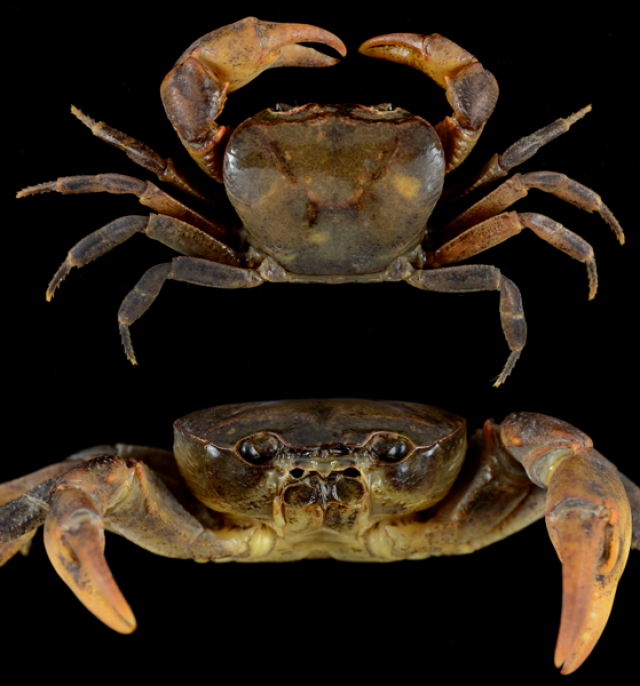Filipino scientists discover new species of freshwater crab in Mindanao
A new species of freshwater crab has been discovered in Mindanao — the "fruit of collaborative work" says one of the biologists behind the discovery, Jose C. E. Mendoza.
"It's a new species of freshwater crab from Barangay Seloton, in Lake Sebu, South Cotabato. My co-author purchased it from a vendor who was selling crabs and freshwater fish for food," Mendoza told GMA News Online in an interview via Facebook chat on August 31st.
"Ganyan talaga ang mga field biologist. Vendors and markets, especially in remote or understudied areas, are one of the first places we look when we survey the biodiversity of those areas. Kumbaga how do people interact with or utilize this biodiversity?" he added.

Mendoza is a lecturer at the National University of Singapore, while his co-author Emerson Y. Sy is based in the Philippine Center for Terrestrial and Aquatic Research.
The details of their serendipitous discovery will be published in the Michael Türkay Memorial Issue of the journal "Crustaceana."
Mendoza described Türkay as a "carcinologist from the Senckenberg Museum and Research Institute in Frankfurt, Germany" and the new species — Sundathelphusa miguelito — is named after him.
"Importante ang discovery na ito because of the very nature of freshwater crabs. As their name suggests, they are highly dependent on good and healthy freshwater habitats, and because of this, they tend to have very limited distribution ranges," Mendoza declared.
"This species is very likely to be endemic to Mindanao, and worthy of conservation and further study. Kumbaga, step one pa lang ito na nadiskubre natin sya at nabigyan ng pangalan."
Sundathelphusa miguelito is only the 5th species of freshwater crabs in Mindanao. The most recent discovery was in Agusan del Sur Province in 2001 (Sundathelphusa hades).
Three other species were discovered decades earlier — Sundathelphusa mistio (1904), Sundathelphusa montanoanus (1904), and Sundathelphusa wolterecki (1937).
"[Sundathelphusa miguelito] differs from those kasi relatively mas mabilog 'yong katawan niya at mas maiksi yung galamay niya. Also, iba 'yong korte ng kanyang male genitalia kumpara d'on sa iba," Mendoza told GMA News Online.
He and Sy note in their paper that Sundathelphusa miguelito is "regularly collected and sold as food by ambulant fish vendors to nearby municipalities of the province."
"Yes, it is edible. Most freshwater crabs are. Ingat lang kasi they are known vectors of lung flukes, which cause paragonimiasis in humans who eat them raw," Mendoza explained.
Mendoza has previously written on other freshwater crabs species, including Sundathelphusa cagayana from Penablanca, Cagayan (described in 2010); Sundathelphusa niwangtiil, from southern Negros (described in 2015); Sundathelphusa orsoni, from northern Negros (described in 2015); and Isolapotamon maranao from Lanao del Sur (described in 2014). — GMA News



